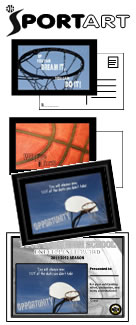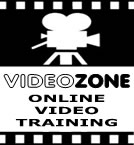 Basketball passing is an integral aspect of a good offensive attack. As we mention at other places on our site, everyone wants to be good at basketball shooting. But how do you get the best shots? By having a great basketball passing attack. Think about it. Every offensive philosophy basically boils down to trying to open up good, high percentage shot attempts, right? Passing is the key to creating these shots. If you and your team work hard to perfect your passing game, everyone will benefit as scoring goes up. Basketball passing is an integral aspect of a good offensive attack. As we mention at other places on our site, everyone wants to be good at basketball shooting. But how do you get the best shots? By having a great basketball passing attack. Think about it. Every offensive philosophy basically boils down to trying to open up good, high percentage shot attempts, right? Passing is the key to creating these shots. If you and your team work hard to perfect your passing game, everyone will benefit as scoring goes up.
Passing Drills
Passing Videos
TYPES OF PASSES:
The Chest Pass:
1. Always receive the ball in the triple-threat position (feet shoulder-width apart and slightly staggered, knees bent, shooting hand on top of the ball and your other hand to the side, and elbows bent at 90-degree angles).
2. Hold the ball on a level even with your sternum.
3. Push off your back foot.
4. Take a step with your front foot.
5. Extend your arms in a quick motion to pass the ball and snap your wrists.
If your teammate is running, lead the ball far enough in front of them so they do not have to break stride to catch it. When your teammate is standing still, pass the ball so your teammate is not forced to move.
Avoid using the chest pass when a defender is lurking around your teammate. This pass is easier to steal because it's generally thrown in a straight line.
You can throw the chest pass with velocity since you don't bounce it. The chest pass is best used on the perimeter of the court.
Bounce Pass:
1. Receive the ball in the triple-threat position (feet shoulder-width apart and slightly staggered, knees bent, shooting hand on top of the ball and your other hand to the side, and elbows bent to 90-degree angles).
2. Hold the ball at waist level. You may need to alter the position of the ball from hip to hip depending on your defender's location.
3. Aim for a spot three-quarters of the way between you and your teammate.
4. Push off your back foot.
5. Take a step with your front foot.
6. Extend your arms in a quick, downward motion to pass the ball.
When your teammate is moving, lead the ball far enough in front so your teammate can catch the ball in stride. Pass the ball so your teammate is not forced to move. Attempt to get your teammate the ball so that he or she is in the triple-threat position upon receiving the ball. The bounce pass is difficult for a defender to steal. The change of direction is hard for the defender to judge.
When your teammate is on the move, a bounce pass is easier to handle than a chest or overhead pass. Practice the trajectory and speed of your bounce pass to increase your accuracy. Try not to telegraph your pass to your defender. Learn to feint a move in a different direction first, or develop your "no look" passing.
Overhead Pass:
1. Receive the ball in triple-threat position (feet shoulder-width apart and slightly staggered; knees bent; shooting hand on top of the ball and your other hand to the side; and your elbows bent almost 90 degrees).
2. Place your hands on either side of the ball.
3. Bring the ball directly behind your head with your forearms parallel to the court.
4. Push off your front foot.
5. Take a step with your back foot.
6. Snap your elbows down with your arms, finishing when arms are completely extended in front of you.
There's no need to mimic the Incredible Hulk with this pass and throw too hard - it will already be a powerful pass. Use this pass when you need to go over the top of your defender. Keep in mind, however, that it's an easy pass to steal.
H O O P E R X P A S S I N GX T I P S |
MAIN KEYS TO PASSING
-Eye contact. -Crisp two handed pass motion. -Pass to the target, if the player is in motion, throw a lead pass. -Thumbs should be pointing in the direction of the ball after the ball is thrown.
HAND POSITION FOR THE CHEST PASS
When throwing a chest pass, position your hands on the sides of the ball, both thumbs pointing up. When the pass is thrown correctly, the hands should rotate so that the backs of the hands face each other and the thumbs point down.
STEP TOWARD
When passing the ball, step toward your receiver to put more power behind your pass.
BOTH HANDS
Keep both hands on the ball until the pass is released.
NO WINDING UP
Don't wind up as you're passing the ball.
THE ENTRY PASSES
To enter the ball to the wing, the passer and receiver should ensure a proper passing angle. The passer from the guard spot should attempt to get to, what we call, the "Entry Line". The Entry Line is a line drawn from the basket THROUGH the corner of the key and the free throw line, on out to half court. The passer should attempt to get as close to that line with the dribble prior to passing to the wing. This ensures a good angle to the wing and cuts down on the defense’s chance of denying or intercepting the pass.
PASSING INTO THE POST
One of the biggest problems with passing the ball into the post is passing from bad angles. The passer, the post player and the basket should all be in a direct line. This forces the defender to pick a side to guard, and you can get a good angle from which to feed the ball into the low post.
FAKE AND THROW A PASS
When you are prepared to pass the ball while being pressured by a defender, pass fake (which is a fake throwing the ball in one direction) then pass the ball other way. Fake a bounce pass and throw overhead. Fake overhead and throw around. This will usually make the defender go for the first pass and clear some lane for a pass in the opposite direction.
PASSING INTO THE POST
One of the biggest problems with passing the ball into the post is passing from bad angles. The passer, the post player and the basket should all be in a direct line. This forces the defender to pick a side to guard, and you can get a good angle from which to feed the ball into the low post.
KNOW THE DEFENDER
A good rule of thumb when passing is to pass around or under a taller opponent, over a shorter one. These passes will be more difficult for that particular defender to stop.
SEE THE DEFENSE
As important as seeing your teammate is, seeing the DEFENSE may be more important. You are going to KNOW where your players should be through practice and naturally react to their same color uniforms. It is better if you have a "soft focus" on the floor and see your teammates through your peripheral vision. However, you should concentrate on where the defense is, attack their weak areas and pass AWAY from the defensive player.
ACURATE
Passes should be crisp, sharp and accurate. They should be delivered neither too soft nor too hard so they can be handled easily by the receiver.
Time to get to work,
Coach O
|





 Basketball passing is an integral aspect of a good offensive attack. As we mention at other places on our site, everyone wants to be good at basketball shooting. But how do you get the best shots? By having a great basketball passing attack. Think about it. Every offensive philosophy basically boils down to trying to open up good, high percentage shot attempts, right? Passing is the key to creating these shots. If you and your team work hard to perfect your passing game, everyone will benefit as scoring goes up.
Basketball passing is an integral aspect of a good offensive attack. As we mention at other places on our site, everyone wants to be good at basketball shooting. But how do you get the best shots? By having a great basketball passing attack. Think about it. Every offensive philosophy basically boils down to trying to open up good, high percentage shot attempts, right? Passing is the key to creating these shots. If you and your team work hard to perfect your passing game, everyone will benefit as scoring goes up.